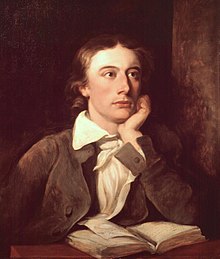
John Keats
We found 10 free papers on John Keats
Essay Examples
Overview
Compare and Contrast Two John Keats Poems
John Keats
John Keats, the renowned romantic poet, intended to create a world of pure joy through his two famous odes – Ode to a Nightingale and Ode on a Grecian Urn. Both these great odes of Keats convey a note of solemnity that deepens now and then to poignant suffering. His words also evoke a haunting…
Critical Analysis of Ode to Autumn
John Keats
Literature
Poetry
Keats wrote “Ode to Autumn” after strolling through the water meadows of Winchester, England, during an early autumn evening in 1819. The poem consists of three stanzas, each containing eleven lines that depict the taste, sights, and sounds of autumn. However, a significant portion of the third stanza focuses on diction, symbolism, and literary devices…
Ode On Grecian Urn Analysis
John Keats
Literature
Poetry
Imagine the following: a bride dressed in white on her wedding day, savage menchasing after women, the lingering subject of love, or a peaceful, uncorruptedtown. What do these topics have in common? Through the use of these topics, JohnKeats portrays the theme of eternal innocence and the sufficiency of beautythroughout his poem, “Ode on a…
John Keats: When I Have Fears That I May Cease to Be Analysis
John Keats
John Keats was a famous romantic poet whose work was characterized mainly by his use of diction, tone, and other literary devices to create sensual imagery in his works of poetry. Throughout the Elizabethan sonnet, When I have Fears that I May Cease to Be, one can see that Keats reflected his thoughts on life…
“To Autumn” by John Keats
John Keats
In this poem Keats describes the season of Autumn. The ode is an address to the season. It is the season of the mist and in this season fruits are ripened on the collaboration with the Sun. Autumn loads the vines with grapes. There are apple trees near the moss growth cottage. The season fills…
Romance In The Darkling Thrush, Next To The Naturalism Of A Nightingale Analysis
John Keats
Literature
Romanticism
Not every Romantic is a purist, and not every Naturalist has no hope—which we see evidenced in two poems by Thomas Hardy and John Keats. While they both touch on the over-riding thoughts and beliefs of their days, they also demonstrate an ability to look beyond their present spheres—to come to clearer understandings of…
“Ode To A Nightingale” by John Keats
John Keats
ODE TO A NIGHTINGALE When reading John Keats’ poem, one cannot help but notice the intense envy he harbors towards the nightingale and its melodic song. The poet juxtaposes the carefree existence of the bird with the agony, hardship, and eventual death faced by humanity. Throughout the poem, he frequently alludes to Greek gods and…
The Odes – In Search Of The Ideal (three of Keats)
John Keats
Literature
Poetry
The casual reader of John Keats poetry would most certainly be impressed by the exquisite and abundant detail of its verse, the perpetual freshness of its phrase and the extraordinarily rich sensory images scattered throughout its lines. But, without a deeper, more intense reading of his poems as mere parts of a larger whole, the…
Analysis of “Ode to a Nightingale” and “to a Skylark”
John Keats
Literature
Poetry
Analysis of “Ode to a Nightingale” and “To a Skylark” “To a Sklyark”, and “Ode to a Nightingale” 19th century English romanticism poems; written by Percy Shelley and John Keats. Keats and Shelley use allegory imagery of the bird to express an aesthetic expression, and their understanding of human nature. While Shelley’s impression of the…
Poem “Ode To A Nightingale” Analysis
John Keats
Literature
Poetry
Ode to a Nightingale In Ode to a Nightingale, John Keats, the author and narrator, used descriptterminology to express the deep-rooted pain he was suffering during his battlewith tuberculosis. This poem has eight paragraphs or verses of ten lines eachand doesn’t follow any specific rhyme scheme. In the first paragraph, Keats gaveaway the mood of…
| born | October 31, 1795, Moorgate, London, United Kingdom |
|---|---|
| died | February 23, 1821, Rome, Italy |
| description | John Keats was an English poet prominent in the second generation of Romantic poets, with Lord Byron and Percy Bysshe Shelley, although his poems had been published for only four years when he died of tuberculosis at the age of 25. |
| books | Ode to a Nightingale 1819, To Autumn 1820, |
| movies | Arterial |
| quotations | A thing of beauty is a joy forever: its loveliness increases; it will never pass into nothingness. I love you the more in that I believe you had liked me for my own sake and for nothing else. Heard melodies are sweet, but those unheard are sweeter. Nothing ever becomes real till it is experienced. |
| information | Siblings: Thomas Keats, Frances Mary Keats, George Keats Parents: Frances Jennings Keats, Thomas Keats |
Frequently Asked Questions about John Keats
Don't hesitate to contact us. We are ready to help you 24/7

